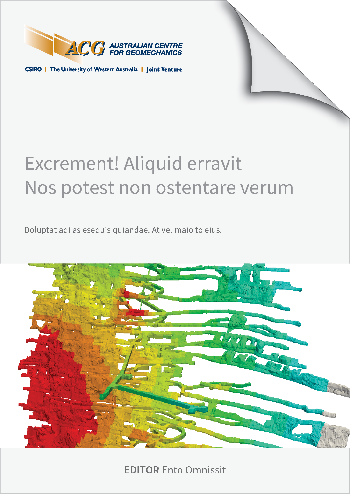Cave back propagation estimation using monitoring data analysis in mXrap

|
Authors: Reid, J; Cumming-Potvin, D |
DOI https://doi.org/10.36487/ACG_repo/2435_C-09
Cite As:
Reid, J & Cumming-Potvin, D 2024, 'Cave back propagation estimation using monitoring data analysis in mXrap', in Daniel Johansson & Håkan Schunnesson (eds), MassMin 2024: Proceedings of the International Conference & Exhibition on Mass Mining, Luleå University of Technology, Luleå, pp. 406-419, https://doi.org/10.36487/ACG_repo/2435_C-09
Abstract:
This paper explores the utilization of existing data for cave back monitoring to develop a data analysis interface that incorporates various monitoring techniques for the creation of a realistic 3D estimation of the cave back. The current industry practice involves manual interpretation of data points obtained from monitoring methods, which can be time-consuming, infrequently updated and subjective between interpreters of the data. The proposed approach aims to overcome these limitations by creating an application that will generate a 3D view of cave back shapes that can be refreshed at will by geotechnical engineers on site, and modified based on their elected data sources and modifying parameters. The application utilizes weighting techniques to assign measurements of confidence to each data point based on location and data source type. It imports data from the elected sources and runs each data source through their respective confidence configuration to obtain a Final Confidence (FC), which is then utilized to ascertain the most likely location of the cave back on a 3D grid. The points on this grid are then meshed to create a surface illustrating the predicted cave back. The methodology was trialed across data sources obtained from an Australian caving operation and assessed for its effectiveness and reasonability of results via comparison between the hand drawn cave back and the computer model. By integrating different monitoring techniques, the data analysis interface built within the mXrap software provides a comprehensive and frequent estimation of the cave back and brings a measure of objectivity to an otherwise subjective practice.
© Copyright 2025, Australian Centre for Geomechanics (ACG), The University of Western Australia. All rights reserved.
View copyright/legal information
Please direct any queries or error reports to repository-acg@uwa.edu.au
View copyright/legal information
Please direct any queries or error reports to repository-acg@uwa.edu.au